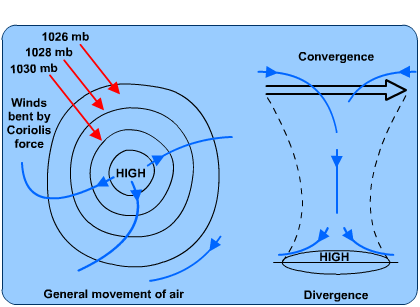This is the Day-17 questions of the CAF Revision plan for prelims. The questions are based on the syllabus as provided in the schedule. Aspirants are requested to go through the detailed CAF strategy to understand the need of the UPSC prelims and to prepare well for the same. Attempt the questions honestly. The key answers and explanations of this test will be live at 9.00pm. The maximum time to attempt the 15 questions is 20 minutes.
Q.1) Consider the following statements.
Assertion (A): Thickness of the troposphere is greatest at the equator.
Reason (R): at equator insolation is high which causes strong convectional currents.
In the context of the statements above, which of these is true?
a) A and R both are true, and R is the correct explanation for A.
b) A and R both are true, and R is the NOT the correct explanation for A.
c) A is correct, R is incorrect.
d) A and R both are incorrect
Q.2) Consider the following statements.
- The valley breeze occurs during the day time and the mountain breeze during the night time.
- The sea breeze occurs during night time and land breeze occurs during day time.
Which of the above statements is/are correct?
(a) 1 only
(b) 2 only
(c) Both 1 and 2
(d) None
Q.3) Consider the following statements about the eye wall of the tropical cyclones.
- Eye wall is the region where there is a strong spiralling ascent of air to greater height reaching the tropopause.
- The wind reaches maximum velocity in this region, reaching as high as 250 km per hour.
- Torrential rain occurs in this region.
Which of the above statements is/are correct?
(a) 1 and 2
(b) 1 and 3
(c) 2 and 3
(d) 1, 2 and 3
Q.4) With respect to the humidity, the dew point is measured in terms of
(a) Kelvin or Celsius
(b) Bar or Pascal
(c) Watt or Joule
(d) None
Q.5) In which of the following regions the rainfall is distributed evenly throughout the year?
- the equatorial belt
- western parts of cool temperate regions
- Eastern part of tropical regions
- Polar regions
Choose the correct answers from the codes given below
(a) 1 and 2 only
(b) 2 and 3 only
(c) 1, 2 and 4 only
(d) All the above
Q.6) “The climatic region borders with dry climate on the western part of the continent and Cf or Cw on the eastern part. is found to the north and south of the Amazon forest in Brazil and adjoining parts of Bolivia and Paraguay in South America, Sudan and south of Central Africa”. These lines describe which of the following climatic type?
(a) Tropical Monsoon Climate (Am)
(b) Tropical Wet and Dry Climate (Aw)
(c) Marine west coast climate (Cfb)
(d) Humid Subtropical Climate (Cwa)
Q.7) Which of the following climatic types can only be found in northern hemisphere?
(a) Cold Climate with Dry Winters (Dw)
(b) Cold Climate with Humid Winters (Df)
(c) Ice Cap Climate (EF)
(d) Both (a) and (b)
Q.8) In which of the following region the Canyons and trenches are observed?
(a) Continental Slope
(b) Continental Shelf
(c) Continental rise
(d) Deep Sea Plain
Q.9) Fog is common around Newfoundland coast because
(a) Icebergs melt around the coast
(b) Warm and cold currents meet
(c) The rainfall is heavy
(d) High tides cause storms
Q.10) Neap tides are produced in the first and third quarters of the Moon. Then,
(a) The Moon and the Sun are in conjunction with the other planets
(b) The Moon and the Sun are in opposition with each other
(c) The attractions of the Sun and the Moon are at right angles to each other
(d) The Moon and the Sun are in quadrant position to each other
Q.11) High tides at antipodes are caused due to
(a) Gravitational pull of the moon and the sun
(b) Gravitational pull of the sun
(c) Centrifugal, centripetal and gravitational pull of the sun
(d) Centrifugal, centripetal and gravitational pull of the sun and the moon
Q.12) At one of the places in India, if you stand on the seashore and watch the sea, you will find that the sea water recedes from the shore line a few kilometres and comes back to the shore, twice a day, and you can actually walk on the sea floor when the water recedes. This unique phenomenon is seen at
(a) Bhavnagar
(b) Bheemunipatnam
(c) Chandipur
(d) Nagpattinam
Q.13) The following figure represents atmospheric pressure in millibars. It is an example of

(a) Anticyclone
(b) Cyclone
(c) Cold front
(d)Warm front
Q.14) Less dew is formed on cloudy nights because
(a) Clouds absorb the falling dew
(b) Clouds scatter moisture
(c) In cloudy nights the radiation takes place very slowly
(d) In cloudy nights the radiation takes place very quickly
Q.15) Which one of the following chemicals is responsible for the depletion of ozone layer in the atmosphere?
(a) Chlorofluorocarbons
(b) Nitrous oxide
(c) Sulphur dioxide
(d) Carbon dioxide
